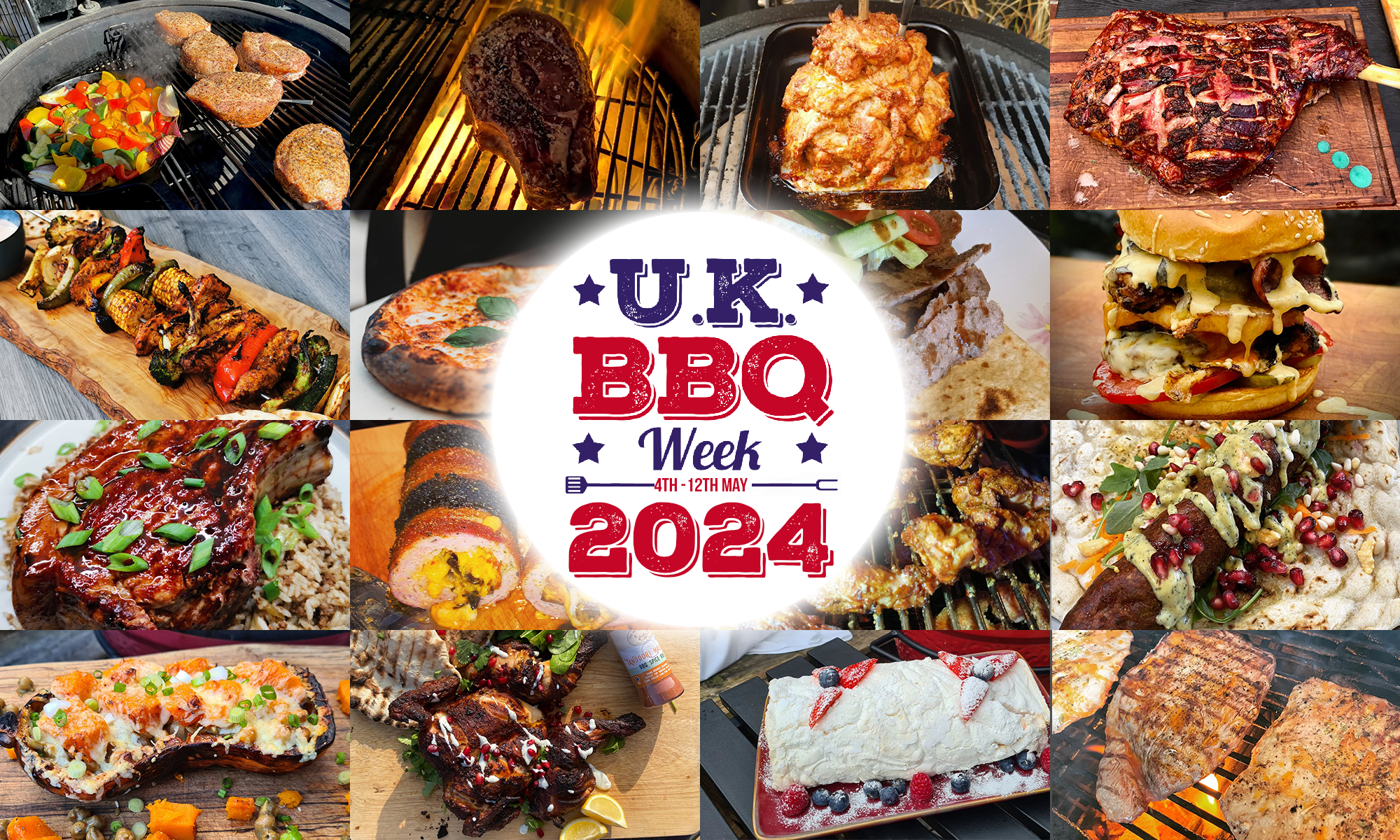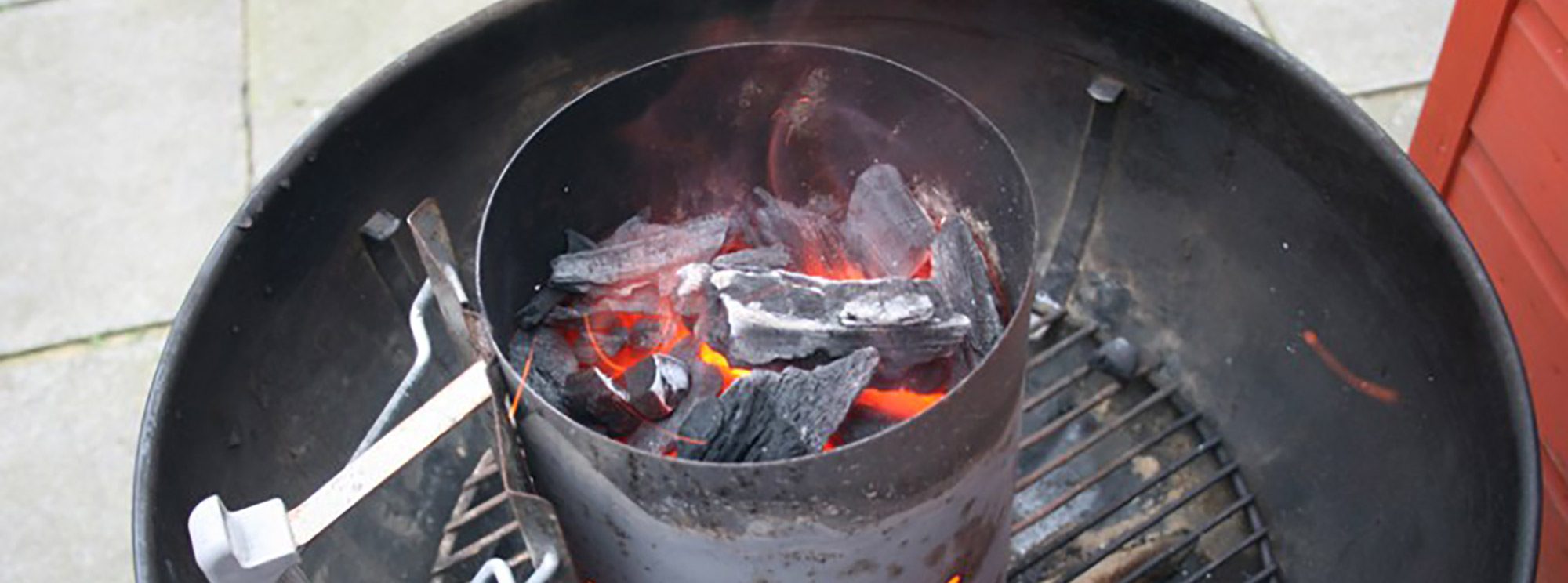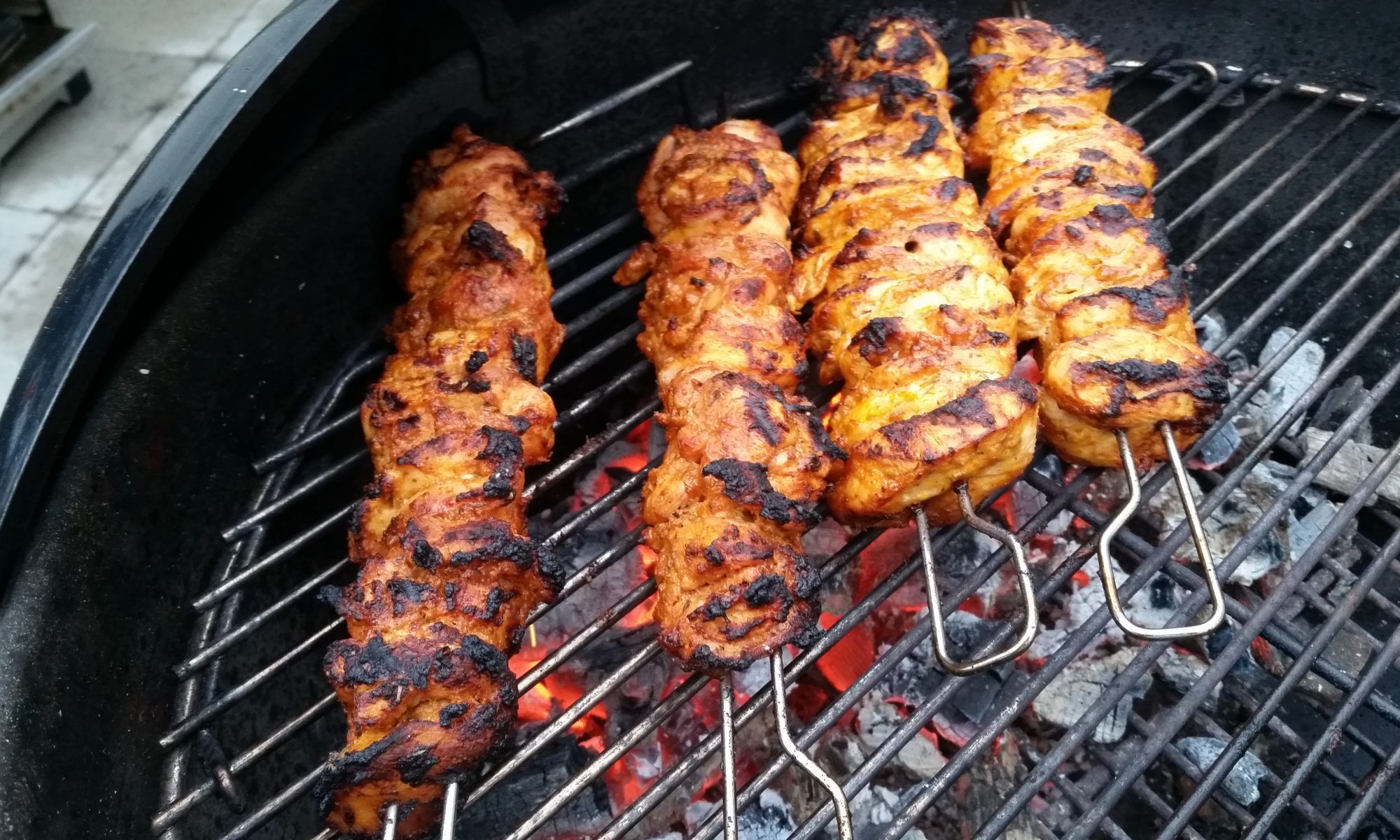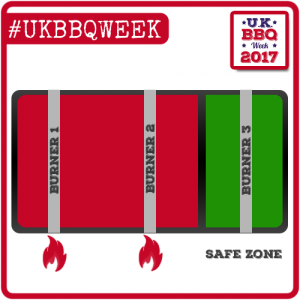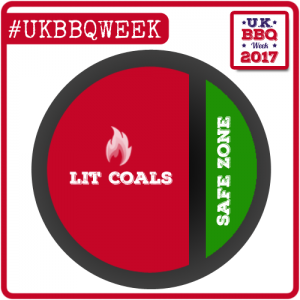An Essential
For anyone with a ‘natural’ BBQ where you need to light either charcoal or briquettes a Chimney Starter is an essential item to own.
What is a Chimney Starter and How to they work?
A chimney starter is by far one of the easiest ways to light the charcoal for your BBQ.
The old method of placing a few fire lighters under a stack of charcoal then dousing it with lighter fuel not only adds a bad flavour to your food, but it can take a long time before your coals are ready to cook on. Add to that the fact that not all the charcoal will light at the same rate and it can easily stress you out before the first piece of meat hits the grill!
A chimney starter takes away all that annoyance as it will light all your charcoal evenly and quickly. It becomes especially useful when lighting briquettes as they are notoriously harder to light that standard lumpwood charcoal.
So how do they work?
You simply fill your desired amount of charcoal into the chimney starter. Then place some form of lighter on the charcoal grate of your BBQ and set the chimney starter on top of it.
The starter is designed to draw air through the bottom, up through your charcoal and out the top (like a chimney). The rush of air flowing through the coals lights them up quickly and as they are all held together in the cylinder, they are evenly lit all the way through.
You will know your coals are ready when the top layer of charcoal has turned white and the flames are dancing at the top.
Using a BBQ Glove, simply pour the lit coals into the BBQ and add your cooking grate. After a few minutes with the lid on to pre-heat your cooking grate, you are ready to cook.
A full chimney starter of lumpwood charcoal should light in around 10-15 minutes. Briquettes can take up to 20-25 minutes to get a full chimney going.
A lot of people moved away from charcoal BBQ’s as they were such a pain to light but this simply isn’t an issue any more. It is recommended that you pre-heat your Gas BBQ for around 15 minutes before cooking so the time difference between the two is negligible.
Adding the right amount of fuel
Another great benefit of a chimney starter is that they allow you to measure the amount of charcoal you are adding to your BBQ so you will quickly learn how much fuel is needed to achieve a desired temperature.
By keeping track of the level the chimney was filled to and the resulting grill temperature, it can make it easier to hit your target temperature i.e. ½ chimney starter of briquettes = 160-180C….. Ideal for roasting when setup for indirect cooking.
I’ve never talked to someone who has purchased a chimney starter and didn’t think it was one of the best investments they had ever made. They make getting a fire going really easy and hassle free allowing you to concentrate on the things that matter, cooking your food!
Sign up for our FREE Newsletter
Keep up to date with all the latest news on UK BBQ Week by entering your name and email address below. We will send you our latest recipes, helpful articles and details on our latest competitions.
